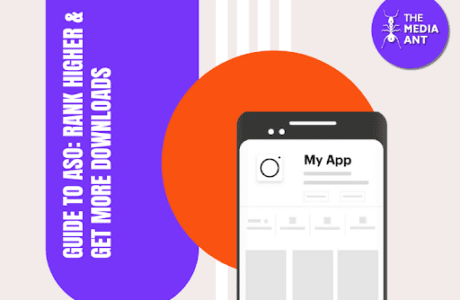In the dynamic landscape of the digital era, online advertising has emerged as a pivotal force, shaping the way businesses connect with their target audiences. Understanding the intricate features of online advertising is crucial for organizations striving to stay competitive and relevant in the ever-evolving realm of the internet. This exploration into the multifaceted facets of online advertising will unveil the tools, strategies and innovations that empower businesses to navigate the virtual marketplace and engage with consumers in unprecedented ways.
Features of Online Advertising
1) Global Reach and Targeting
One of the primary advantages of online advertising is its ability to reach a global audience. Unlike traditional advertising methods with limited geographical reach, online advertising allows businesses to showcase their products or services to potential customers around the world. This global reach is facilitated by the internet’s widespread accessibility.
Online advertising provides sophisticated targeting options, enabling businesses to tailor their campaigns to specific demographics, interests, behaviors and locations. Advertisers can use various tools such as cookies, user data and algorithms to target their messages more precisely, ensuring that they reach the most relevant audience. This targeted approach enhances the effectiveness of the advertising campaign and minimizes wasted resources.
2) Interactivity and Engagement
Online advertising allows for greater interactivity and engagement with the audience. Unlike traditional static ads, online ads can incorporate multimedia elements, such as videos, animations and interactive features. This interactive nature encourages users to engage with the content, leading to a more immersive and memorable experience. Interactive elements, such as clickable links or social media integrations, enable users to take immediate actions, such as visiting a website or sharing the ad with their network.
3) Real-time Analytics and Measurement
Online advertising platforms provide real-time analytics and measurement tools, allowing advertisers to track the performance of their campaigns instantly. Advertisers can monitor metrics such as impressions, clicks, conversion rates and return on investment (ROI). This real-time feedback enables quick adjustments to the campaign strategy, helping advertisers optimize their efforts and maximize effectiveness. Traditional advertising methods often lack such immediacy in performance analysis.
4) Cost-Effectiveness and Flexibility
Online advertising is often more cost-effective than traditional forms of advertising. Digital platforms offer a range of budget options, from pay-per-click (PPC) models to fixed-cost campaigns. Advertisers can set daily or lifetime budgets and they have the flexibility to adjust spending based on campaign performance. This cost-effectiveness makes online advertising accessible to businesses of various sizes, including small and medium enterprises.
Additionally, online advertising offers flexibility in terms of ad formats and placements. Advertisers can choose from various formats like display ads, search ads, social media ads and video ads. They can also experiment with different placements on websites, social media platforms, search engine results pages and more, tailoring their approach to the preferences and behaviors of their target audience.
5) Dynamic Targeting and Personalization
Online advertising allows for dynamic targeting and personalization, delivering tailored messages to specific segments of the audience. Through data-driven insights and artificial intelligence algorithms, advertisers can create personalized ad content based on user preferences, behavior history and demographics. This personalized approach enhances the relevance of the ads, increasing the likelihood of engagement and conversion.
Dynamic retargeting is another powerful feature wherein users who have interacted with a brand’s website or products may see targeted ads when browsing other websites or social media platforms. This strategy aims to re-engage potential customers who have shown initial interest, reinforcing brand awareness and encouraging them to complete a desired action.
6) Social Media Integration
Social media platforms play a crucial role in online advertising, offering extensive opportunities for brands to connect with their audience. Advertisers can leverage social media ads on platforms like Facebook, Instagram, Twitter and LinkedIn to reach specific demographics, interests and behaviors. Social media integration allows for user interaction, comments and sharing, fostering community engagement around a brand. The viral nature of social media can amplify the reach of online advertising campaigns as users share content within their networks.
7) Ad Customization and A/B Testing
Online advertising provides the ability to create highly customized ad content to suit different audience segments. Advertisers can experiment with various ad creatives, headlines, calls-to-action and visuals to identify what resonates best with their target audience. A/B testing, or split testing is a common practice in online advertising where different versions of an ad are shown to different segments of the audience. By analyzing the performance of each version, advertisers can refine their strategies to maximize effectiveness and achieve better results.
8) Mobile Optimization
With the increasing use of smartphones and tablets, mobile optimization has become a critical feature of online advertising. Advertisers must ensure that their ads are designed and optimized for a seamless experience on mobile devices. Mobile-friendly ads not only cater to the preferences of users who access the internet through mobile devices but also contribute to better search engine rankings. Many online advertising platforms provide specific options for mobile ads, allowing advertisers to create campaigns tailored to users on the go.
9) Remarketing Strategies
Online advertising enables powerful remarketing or retargeting strategies. Advertisers can target users who have previously interacted with their website, app, or ads but did not complete a desired action, such as making a purchase. By presenting targeted ads to these users across different platforms, advertisers aim to re-engage them and encourage them to convert. Remarketing is an effective way to stay top-of-mind with potential customers and capitalize on the interest they have already shown in a product or service.
10) Rich Data Insights and Audience Segmentation
Online advertising platforms generate rich data insights about user behavior, preferences and interactions. Advertisers can use this data to create detailed audience segments based on demographics, interests, online activities and more. Audience segmentation allows advertisers to tailor their messages for specific groups, ensuring relevance and resonance. By understanding their audience better, advertisers can craft more personalized and effective campaigns that speak directly to the needs and preferences of different customer segments.
Conclusion
As we delve into the features of online advertising, it becomes apparent that the digital realm offers a vast canvas for businesses to showcase their products and services. From targeted audience reach and data-driven insights to interactive formats and real-time adaptability, the features of online advertising pave the way for unprecedented marketing possibilities. In a world where the online landscape continues to evolve, embracing and mastering these features is not just a strategic advantage, it is an imperative for businesses aspiring to thrive in the competitive marketplace of the digital age. As we conclude our exploration, it is evident that the dynamic nature of online advertising presents an ongoing journey of innovation, adaptability and endless opportunities for those ready to harness its full potential.
FAQs of Features of Online Advertising
What is the purpose of online advertising?
The purpose of online advertising is to promote products, services, or brands through digital channels to reach a targeted audience. It aims to increase brand awareness, drive traffic, and generate sales or leads. Online advertising leverages the internet’s wide reach, targeting capabilities, and interactive features to engage users and maximize the impact of marketing efforts.
What are the factors of online advertisement?
Key factors of online advertising include target audience, ad content relevance, effective use of keywords, ad format and design, platform selection, budget allocation, and tracking metrics. Successful campaigns consider these factors to optimize reach, engagement, and conversion rates. Advertisers also adapt strategies based on consumer behavior, emerging technologies, and market trends to stay competitive in the dynamic online advertising landscape.
What is native advertising?
Native advertising is a form of online advertising that seamlessly integrates into the platform’s content, matching the visual and functional design. It aims to provide a non-disruptive, user-friendly experience by blending with the surrounding content. This approach enhances engagement and often results in a more natural and effective way of promoting products or services without appearing overly promotional.
Are there any ethical considerations in online advertising?
Yes, ethical considerations in online advertising are crucial. Issues include transparency in data usage, respecting user privacy, avoiding deceptive practices, and ensuring truthful representation of products or services. Advertisers must also be mindful of targeting vulnerable audiences and promoting harmful content. Ethical practices build trust and credibility, contributing to a positive online advertising ecosystem and protecting users from potential harm.
What are the trends in online advertising?
Recent trends in online advertising include a focus on privacy with the rise of cookie alternatives, increased emphasis on sustainability and purpose-driven marketing, the growing importance of influencer collaborations, the popularity of shoppable posts, and the continued dominance of video content. Advertisers are also leveraging augmented reality (AR) and virtual reality (VR) for immersive brand experiences, and programmatic advertising continues to evolve for enhanced targeting and efficiency.





